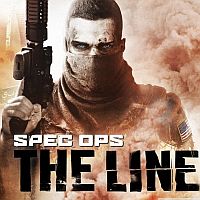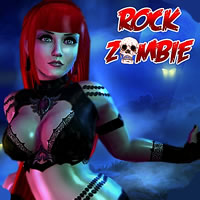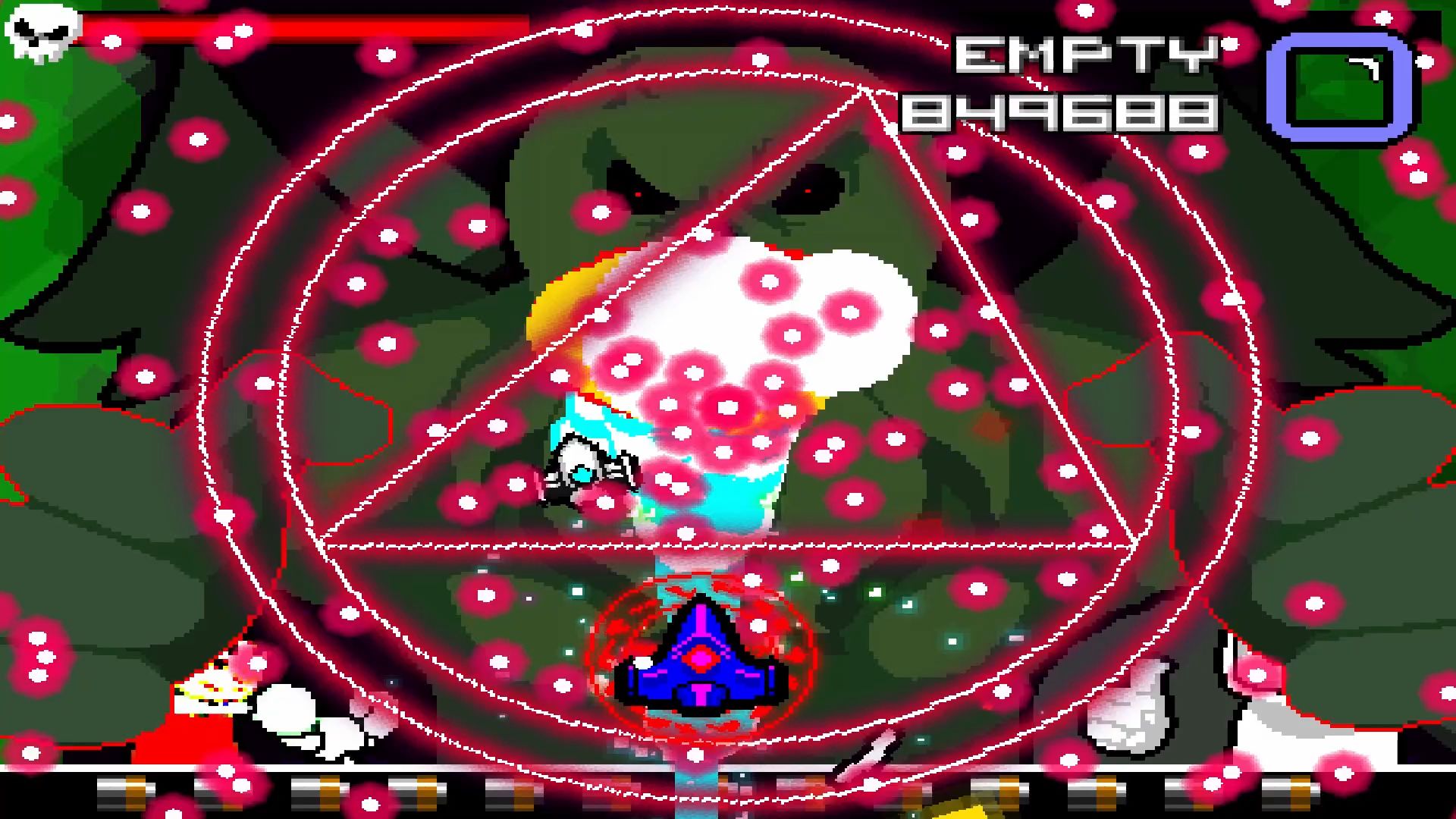
There’s something to a game that purposely looks a bit dirty or rotten. Titles like GARAGE: Bad Trip, ATOMIK: RunGunJumpGun or even cleaner ideas like Nuclear Throne purposely have a sort of off putting aesthetic to them to better immerse yourself in the game’s intended world. Project Starship, from Panda Indie Studio (and published by EastAsiaSoft) went in a similar direction, though I wouldn’t necessarily call it “dirty” in the same way. It’s got this feeling to it of something purposely rough and offbeat, and it does a good job of drawing a player in with a bit of curiosity of how a game could come out like this. The result is fairly competent and straightforward, but don’t fall in love: it’s over before you know it.
There’s nothing to the plot, so don’t even try. You either play Garret or Gwen, a male or female starfighter who is apparently going to blast the living daylights out of Cthulhu, because every good game should feature a cosmic eldritch horror at least once. Hop into the cockpit, choose easy or hard, and get going. That’s all. The ride should be over in a half hour tops, probably far less, so do your best with whichever difficulty level you choose. At this point, players who enjoy shmups should be on the lookout for gameplay first, reasons and rationale second, and Project Starship firmly puts those ideas on the afterburner, as even the actual ending doesn’t totally make sense (I guess it was all for naught?). In any case, the real contest comes down to the ideals of gaming and the execution, so let’s take a look.
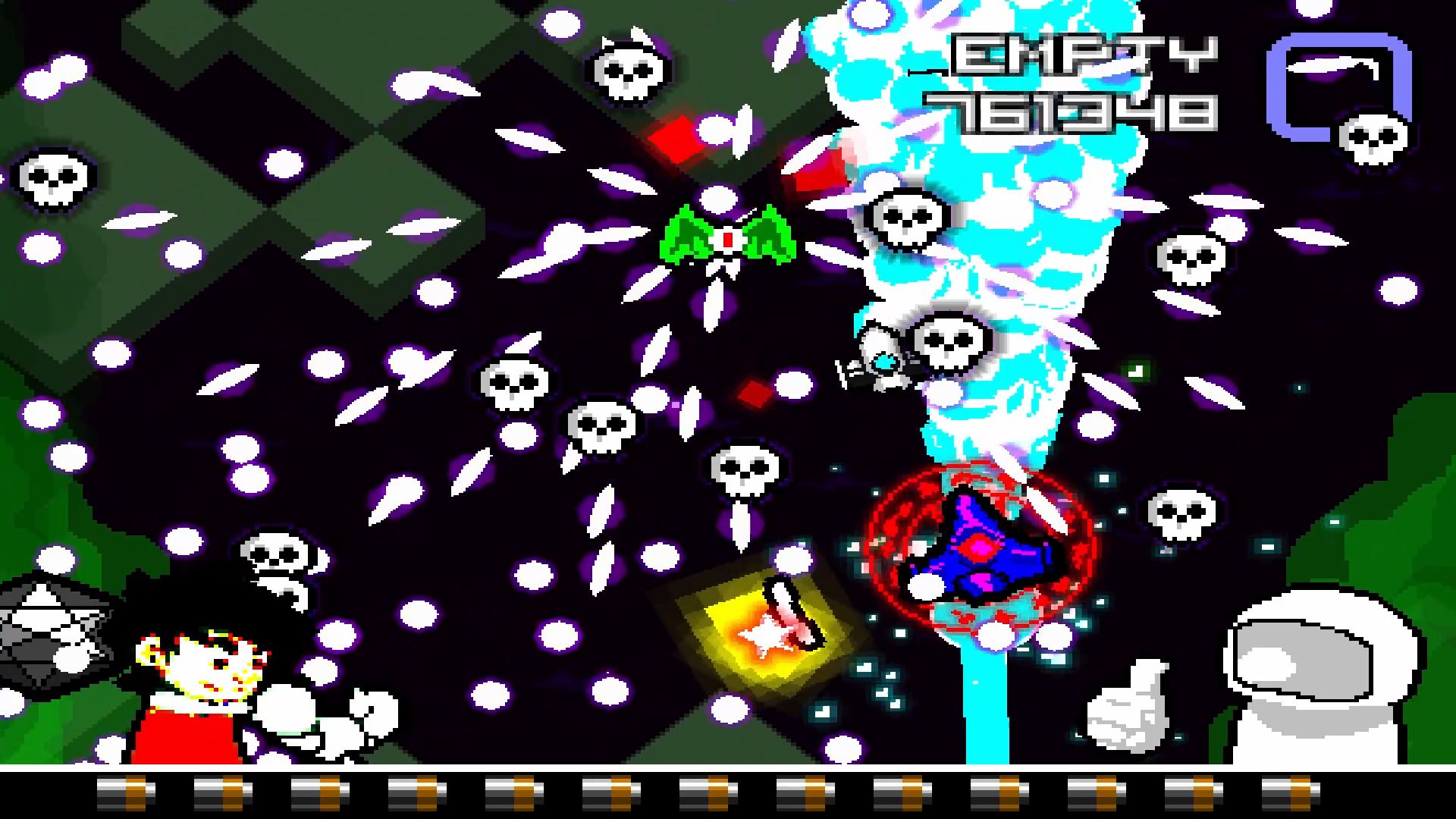
With Project Starship, you have your main ship and the ability to get a couple of subships that orbit you if you play your cards right. Picking up powerups that may or may not involve occult material (is that a paper with a pentagram?) will fire up your guns, sometimes permanently and, in other cases, for a short period of time. Don’t get hit or you turn flashy, get hit too many times and you’re done. Enemies will appear and either crash into you or shoot at you with MASSIVE waves of bullets (more on that in a second), and there’s also the occasional Mad Event, where you need to weave between solid objects in order to not turn into space pizza. Keep it going until you reach the Ancient One himself, though there’ll probably be (there will definitely be) a few bosses before that time. Oh, and be prepared to think on your feet, because the layout is randomized.
Some people have different feelings about shmups being randomized, with many viewing it as a cardinal sin. It defeats a lot of the purpose of high score runners being able to memorize patterns and maps, knowing when and where to shoot and when to take a knee and hide. Project Starship tries to keep things mostly in the same ballpark, but when and where larger and smaller enemies appear is seemingly without reason, which can be off-putting. For example, sometimes you start off and then just have to deal with things like giant eyeballs floating in and gently peppering you with bullets before a massive, angry star appears and does more of the same. Sometimes, however, side-hugging laser turrets will appear and sweep the space in front of them, and the dark tones of the game makes it difficult to know if they’re already there or not. It’s odd because, on the one hand, it does make the game more exciting because you can’t turn it into an exercise of muscle memory and playing it blindfolded. On the other, that’s sort of the whole appeal of shmups for a lot of the danmaku fans, and removing that removes the incentive to play it again and again, which, for the record, is why we let shmups get away with being less than an hour in gameplay length. I guess it matters, then, if it’s well executed.
The answer is…sort of? Don’t get me wrong, it definitely fills the screen with bullets, punishes the player for not being in their appropriate box to dodge, and lets you know that you can easily get clipped into oblivion if you aren’t on point. But Project Starship makes those simple instructions a bit harder due to its design presentation. Since the sprites and artistry is a bit rougher and cruder, you tend to not totally be aware of what is the safe delegation and the unsafe zone for where bullets can be. There’s no graze counter or something similar, so close calls don’t reward you, but they’re also unavoidable. It took a while for me to get passed the first boss, firstly because the path to him was different each time, secondly because the BOSS was different each time, and thirdly because the powerups I obtained were, surprise, different each time. It creates a level of chaos that really rides the border between fun and frustrating, and I felt like I was more in the second camp more often than not. Instead of wanting to get better when I crashed, I just concluded the next generation might be more forgiving. If I was successful, it felt like I was dealt a better hand, not got better at the game. It’s not a good feeling for a genre that I’m already a bit terrible at, and it never really went away.
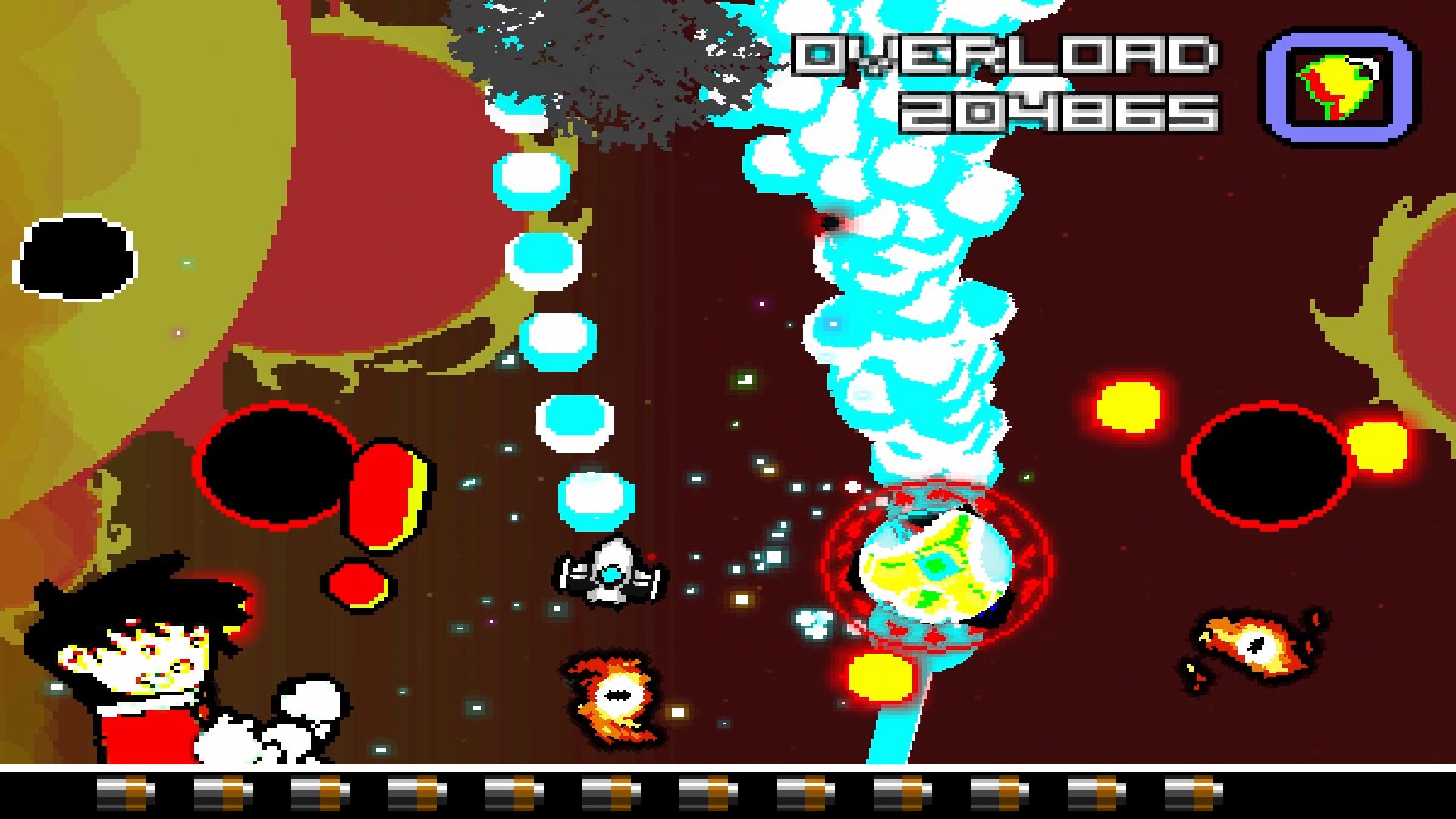
Still, Project Starship does have a certain flair for presentation, with some pretty cool looking bosses and enemies, and some solid attack patterns to piece together and figure out. The randomization did play in that favor in that I was able to see more of the bosses without technically getting further, and quickly try to adapt and remember their strike patterns as they were unfolding. Rough or not, the character and mob design were memorable and fun, and I enjoyed looking at the game, especially because I’m not epileptic. That warning at the beginning of the game is legit, and should probably have a better buffer to it, because I was feeling a bit ill just from the static and screen shaking that occurred with the opening credits. Seriously, the number of flashes and explosions are pretty frequent, so do not attempt this game if you’re prone to epilepsy.
Project Starship is a decent little shmup with plenty of replay value behind it, but not in the traditional sense of a shmup. It’s roguelite nature will delight some, frustrate others, but ultimately create more replay value than the average shooter. I wish there was more difference in Garret and Gwen’s roles, though the artwork for the easy and hard difficulty choices were fun and cute. For a solo endeavour, it’s a good personal challenge, and might knock you out of your comfort zone for bullet hell and try something a bit different. For a few bucks and under an hour of gameplay, it’s worth a shot.
REVIEW CODE: A complimentary Nintendo Switch code was provided to Bonus Stage for this review. Please send all review code enquiries to press@4gn.co.uk.
Subscribe to our mailing list
Get the latest game reviews, news, features, and more straight to your inbox
Thank you for subscribing to Bonus Stage.
Something went wrong.
Project Starship Review
-
Gameplay - 7/10
7/10
-
Graphics - 7/10
7/10
-
Sound - 7/10
7/10
-
Replay Value - 7/10
7/10
User Review
( votes)Overall
Summary
While a bit rough around the design edges, this procedurally generated shmup has character, and Cthulhu, so you gotta give them some credit.



